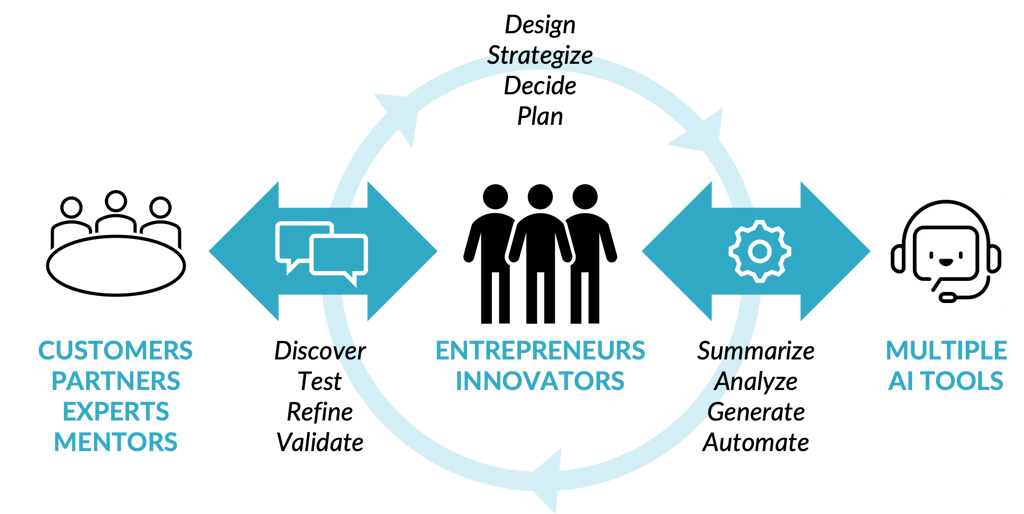Starting a business today can feel like standing at the edge of an ocean, with so many possibilities, so many unknowns, and just as many distractions.
Thankfully, AI tools are here to help you visualize concepts, design websites, analyze competitors, and even draft business plans in a matter of minutes or seconds. But they can’t tell you what’s worth building or whether your business concept solves a real problem. That’s where human-centered thinking makes all the difference: talking to people, validating assumptions, and shaping an offering that will make a real impact.
When we launched AdvantEdge, we combined this people-first approach with intentional AI assistance. The result? A faster launch without sacrificing relevance or quality. Here’s how it played out, and a few takeaways to share with entrepreneurs and innovators.
🔷 Step 1: Ground the vision in human insight
Before touching an AI tool, we started with conversations. We talked with former colleagues, clients, and new contacts in our target industries. We wanted to understand the challenges they were facing and where our expertise could make a difference.
Four themes stood out:
A desire for capability-building, not just one-off deliverables.
Frustration with polished but impractical consulting outputs.
The need for faster, more adaptive approaches to business strategy and innovation.
The importance of validating needs before jumping to solutions.
From these insights, we co-created our service offerings, defined target client segments, and crafted value propositions.
Takeaway: If you skip the human discovery phase, you risk launching something shiny but irrelevant.
🔷 Step 2: Use AI to accelerate design and planning
Once we knew what to build, AI helped us get there faster. Examples:
Market research: Synthesizing trend data and competitive intelligence.
Content creation: Drafting early website copy and pitch decks.
Naming and design: Exploring brand concepts, visuals, and taglines.
Idea testing: Generating multiple strategies or messaging variations for feedback.
Each time, AI gave us a head start. We then refined and reshaped the work to match our strategy, voice, and client needs. As Sundar Pichai, CEO of Alphabet, said: “AI works best when combined with human judgment and creativity.”
Takeaway: AI can dramatically reduce time to market, but only if you take the lead in shaping and improving its output.
🔷 Step 3: Iterate quickly toward launch
This combination of human insight and AI-assisted execution dramatically shortened our timeline. We focused more on strategic and creative work, like service design, business development, relationship building, and less on starting from scratch.
Our consulting pitch deck, for instance, went through multiple AI-assisted drafts and client feedback loops until it clearly resonated. That cycle, AI to accelerate and humans to validate, was essential to launching with confidence.
Takeaway: Speed matters, but refinement matters more. Use AI to move fast, and people to ensure you’re moving in the right direction.
The bigger picture
Whether you’re building a business, product, or service:
Start with people: Validate the problem and your value proposition.
Use AI as a multiplier: Let it speed up research, content, and prototyping.
Test and iterate: Human judgment keeps AI output relevant and impactful.
For us, that’s not just a business planning and launch strategy. It’s how we plan to grow.
AI can help you build faster, but human insight ensures you build the right thing.



